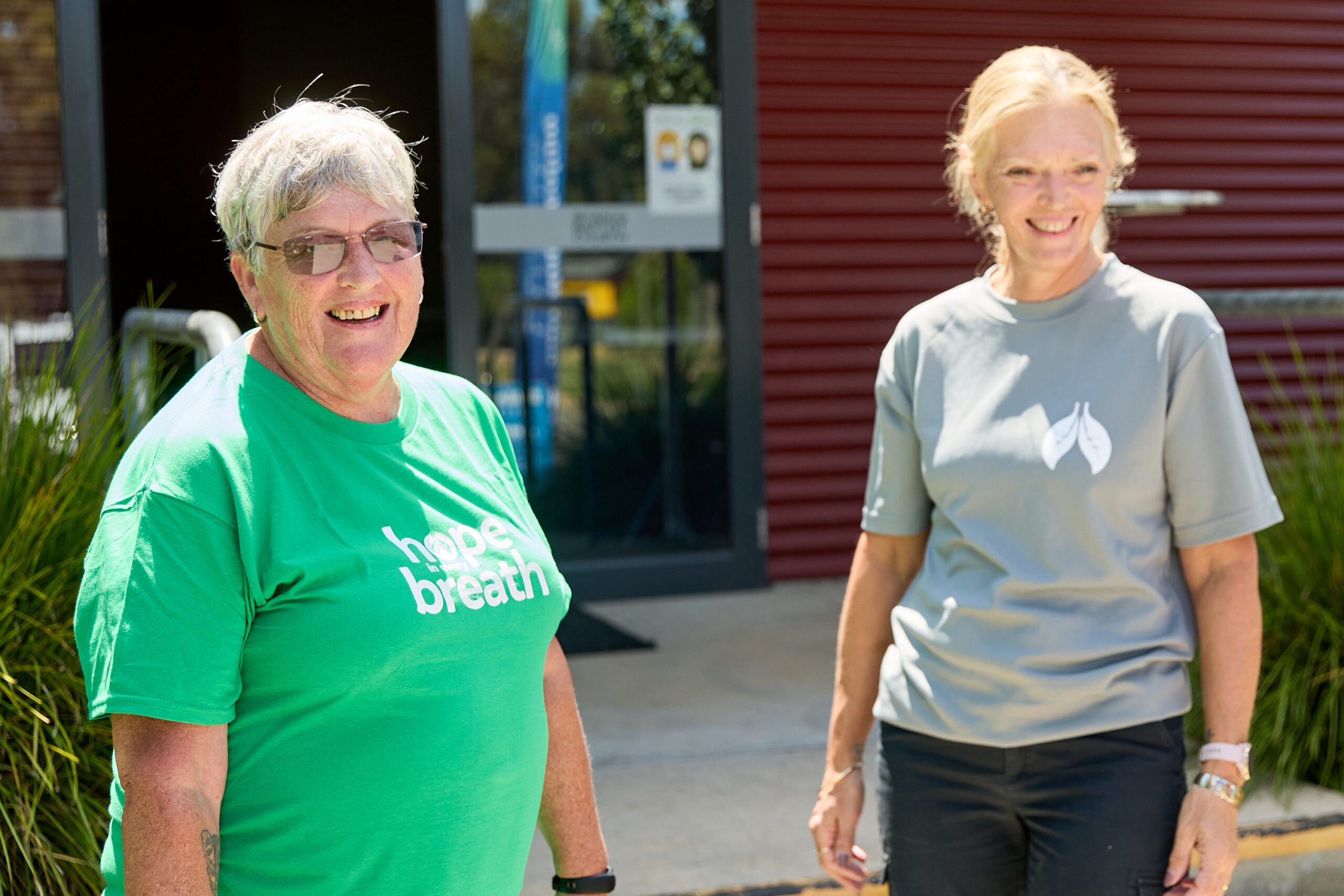Assessing Quality of Life & Psychological Status
Quality of Life
A consistent finding in PR research has been an improvement in patients’ health-related quality of life. Enhancing quality of life is a central aim of PR programs and is highly valued by patients.
A measure of health-related quality of life should be included in the evaluation of a PR program.
Health-related quality of life can be measured with disease-specific or generic measures. Due to their widespread and thorough validation, the following questionnaires are recommended:
- Chronic Respiratory Disease Questionnaire (CRDQ or CRQ) – disease specific.
- St George’s Respiratory Questionnaire (SGRQ) – disease specific.
- Medical Outcomes Study Short Form 36 (MOS SF 36) – generic.

The disease-specific questionnaires are more likely to be responsive to changes after PR and more sensitive to specific respiratory issues than the generic questionnaires. The generic questionnaires provide a more global view of the respiratory patient’s quality of life, include a wider range of scales and can be readily compared with other illness groups.
According to Lung Foundation Australia’s 2015 national survey of PR programs- the SGRQ was the most commonly used QoL questionnaires used in Australian pulmonary rehabilitation programs.
The COPD Assessment Test (CAT) is a short questionnaire to measure health status. While the CAT is not a quality of life questionnaire, the CAT score correlates strongly with the SGRQ total score.
It should also be noted that use of MOS SF 36 and CRDQ require license use payments.
The important features of each of these questionnaires are summarised in the table below:
Pulmonary Hypertension
In PAH the most commonly used disease specific QoL questionnaires are the Camphor ( Cambridge Pulmonary Hypertension Outcome Review) and the emPHasis 10.
Interstitial Lung Disease
The SGRQ and CRQ are widely used in patients with ILD and are also responsive to change following PR in this patient group. Two ILD-specific HRQoL instruments, the IPF-specific version of SGRQ and the King’s Brief Interstitial Lung Disease questionnaires, have recently been developed. They have not been widely used in PR to date although recent evidence suggests they are responsive to change following PR and are therefore worthy of consideration.
Lung Cancer
For people with lung cancer: European Organization for Research and Treatment of Cancer quality of life questionnaire (EORTC QLQ-C30) and lung cancer module (QLQ-LC13).
| St. George’s Respiratory Questionnaire (SGRQ) | Chronic Respiratory Disease Questionnaire (CRDQ or CRQ) | Medical Outcomes Study Short Form 36 (MOS SF-36) | The COPD Assessment Test (CAT) | ||||||
|---|---|---|---|---|---|---|---|---|---|
|
Practical considerations
|
|||||||||
|
Domains assessed
|
|||||||||
|
Key Features/ Remarks
|
|||||||||
The reliability and validity of the SGRQ and CRDQ is well established with bronchiectasis patients.
Quality of Life Questionnaires: An Outcome Measure
When determining the effectiveness of a PR program (see Patient reassessment section), both statistical significance and clinical importance should be considered. The magnitude of change in the scores of some quality of life questionnaires is reflective of an important improvement (e.g. CRDQ, SGRQ). However, with some other instruments (e.g. SF 36), the magnitude of the change that reflects an important improvement has not been determined.
Assessing Psychological Status: Anxiety and Depression
The definition of pulmonary rehabilitation states that pulmonary rehabilitation is designed to improve the physical and psychological condition of people with chronic respiratory disease. 17
Anxiety and depression are commonly evaluated as a measure of psychological status in people with chronic lung disease. There is a high prevalence of symptoms of anxiety and/or depression in people with chronic respiratory disease with a higher prevalence found in those with more severe respiratory disease requiring supplemental oxygen) and those with lower functional exercise capacity. Moreover, disease-specific anxieties (i.e. fear of dyspnoea, fear of physical activity) and illness perceptions can impact patients’ quality of life, since such disease-specific anxieties relate to avoidance tendencies and generally more dysfunctional illness behaviour.22 23 24
Pulmonary rehabilitation programs have been shown to reduce anxiety and depression in people with COPD (Trappenberg et al, 2005; Coventry et al, 2009; Harrison et al, 2012; Yohannes et al, 2018) with those with higher anxiety and depression on initial assessment experience improvement in these symptoms after pulmonary rehabilitation (Harrison et al 2012).
Given the relatively high incidence of anxiety and depression in patients with chronic respiratory disease and the reduction achieved with a pulmonary rehabilitation program, evaluation of psychological status (anxiety and depression) is recommended as important, both as an outcome of a pulmonary rehabilitation program and as a screening tool for referral for psychological support.

Measurement Tools
There have been a variety of tools used to measure psychological status. No one tool is used (or accepted) as the gold standard. Some examples of commonly used tools are provided below.
- Hospital Anxiety and Depression Scale (HADs) (Zigmond and Snaith 1983). The HADS is a fourteen item scale with seven of the items related to anxiety and seven related to depression. A license agreement must be completed before use and a user fee may be required (Hospital Anxiety and Depression Scale (HADS)). Some organisations, like Australian Local Health Districts, may hold a license so check with your health district.
- Depression Anxiety Stress Scales (DASS) (Lovibond and Lovibond 1995). The DASS is a 42-item self-report instrument designed to measure the negative emotional states using fourteen items in each of the following domains of depression, anxiety and tension/stress. A short form, DASS 21, has seven items in each domain, and the validity and responsiveness of DASS 21 has recently been evaluated in people with COPD (Yohannes et al, 2018). The DASS is freely available from the Pschology Foundation of Australia.
- Cancer-related fatigue is often experienced by people with lung cancer. A commonly used, valid and reliable questionnaire to measure this is the Functional Assessment of Chronic Illness Therapy-Fatigue (FACIT-F)


